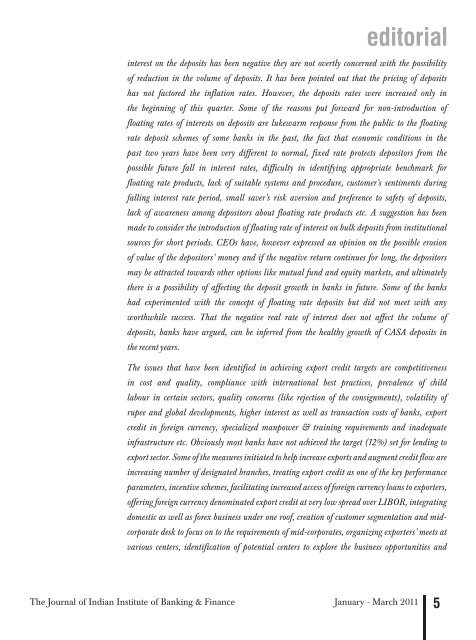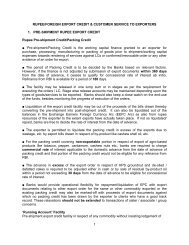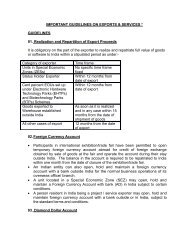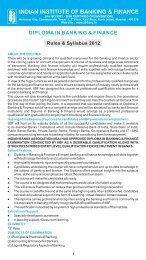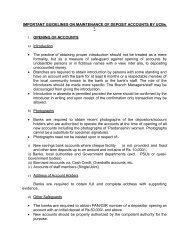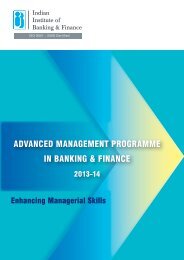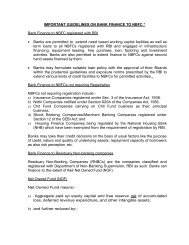Keb[ / DebkeÀ / pevekejer - cee®e& /
special feature - Indian Institute of Banking & Finance
special feature - Indian Institute of Banking & Finance
- No tags were found...
You also want an ePaper? Increase the reach of your titles
YUMPU automatically turns print PDFs into web optimized ePapers that Google loves.
editorialinterest on the deposits has been negative they are not overtly concerned with the possibilityof reduction in the volume of deposits. It has been pointed out that the pricing of depositshas not factored the inflation rates. However, the deposits rates were increased only inthe beginning of this quarter. Some of the reasons put forward for non-introduction offloating rates of interests on deposits are lukewarm response from the public to the floatingrate deposit schemes of some banks in the past, the fact that economic conditions in thepast two years have been very different to normal, fixed rate protects depositors from thepossible future fall in interest rates, difficulty in identifying appropriate benchmark forfloating rate products, lack of suitable systems and procedure, customer's sentiments duringfalling interest rate period, small saver's risk aversion and preference to safety of deposits,lack of awareness among depositors about floating rate products etc. A suggestion has beenmade to consider the introduction of floating rate of interest on bulk deposits from institutionalsources for short periods. CEOs have, however expressed an opinion on the possible erosionof value of the depositors' money and if the negative return continues for long, the depositorsmay be attracted towards other options like mutual fund and equity markets, and ultimatelythere is a possibility of affecting the deposit growth in banks in future. Some of the bankshad experimented with the concept of floating rate deposits but did not meet with anyworthwhile success. That the negative real rate of interest does not affect the volume ofdeposits, banks have argued, can be inferred from the healthy growth of CASA deposits inthe recent years.The issues that have been identified in achieving export credit targets are competitivenessin cost and quality, compliance with international best practices, prevalence of childlabour in certain sectors, quality concerns (like rejection of the consignments), volatility ofrupee and global developments, higher interest as well as transaction costs of banks, exportcredit in foreign currency, specialized manpower & training requirements and inadequateinfrastructure etc. Obviously most banks have not achieved the target (12%) set for lending toexport sector. Some of the measures initiated to help increase exports and augment credit flow areincreasing number of designated branches, treating export credit as one of the key performanceparameters, incentive schemes, facilitating increased access of foreign currency loans to exporters,offering foreign currency denominated export credit at very low spread over LIBOR, integratingdomestic as well as forex business under one roof, creation of customer segmentation and midcorporatedesk to focus on to the requirements of mid-corporates, organizing exporters' meets atvarious centers, identification of potential centers to explore the business opportunities andThe Journal of Indian Institute of Banking & Finance January - March 2011 5


